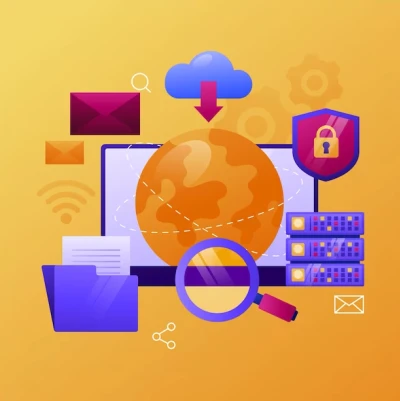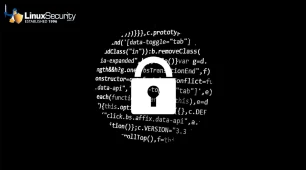
Google's widely used Chrome web browser is back in the security spotlight, as yet another 13 critical security flaws need to be urgently addressed. Google quickly released Chrome 132 to patch these severe bugs. With vulnerabilities ranging from out-of-bounds memory access to a stack buffer overflow, these issues impact data integrity and the overall security posture of affected systems.
Luckily, Chrome updates are quick and painless to install, ensuring minimal disruption while providing maximum security benefits. Maintaining browser updates will decrease the risk that vulnerabilities exploited within your network can pose. Let's dive deeper into these flaws and effective mitigations, as prompt action against potential exploits is necessary!
What Makes the Recent Chrome 132 Update So Urgent?
 Google Chrome is more than just a web browser - it plays a vital role in many workplaces, including Linux server environment. Due to its widespread adoption and usage, malicious actors frequently target Chrome to exploit vulnerabilities with high to low severity levels. Recently discovered flaws mitigated in Chrome 132, including out-of-bounds memory access, improper implementations, and stack buffer overflows that may allow attackers to access sensitive information without authorization or compromise system data. These vulnerabilities could enable malicious actors to access system data or gain unauthorized entry via compromised accounts or login credentials.
Google Chrome is more than just a web browser - it plays a vital role in many workplaces, including Linux server environment. Due to its widespread adoption and usage, malicious actors frequently target Chrome to exploit vulnerabilities with high to low severity levels. Recently discovered flaws mitigated in Chrome 132, including out-of-bounds memory access, improper implementations, and stack buffer overflows that may allow attackers to access sensitive information without authorization or compromise system data. These vulnerabilities could enable malicious actors to access system data or gain unauthorized entry via compromised accounts or login credentials.
Google's release of Chrome 132 represents an aggressive effort to address these vulnerabilities quickly. We security administrators must act fast or risk leaving our Linux environments exposed and at risk! Ignoring updates of this nature leaves our data susceptible and undermines our overall security posture.
Examining the Impact of Vulnerabilities on Affected Systems
To truly understand the significance of this update, we need to appreciate the dangers vulnerabilities pose in a networked environment. Out-of-bounds memory access, for instance, occurs when a program reads (or writes) data outside the bounds of allocated memory. This flaw can crash systems, corrupt data, or allow attackers to execute arbitrary code.
Vulnerabilities in navigation or rendering engines, like those related to the V8 JavaScript engine in Chrome, could be exploited to redirect users to malicious sites or execute pernicious scripts. Such breaches can result in data theft, identity theft, or even localized denial of service.
The update to Chrome 132 not only patches these individual vulnerabilities but also strengthens the browser's overall security architecture, providing a sturdy shield against potential exploits.
The Critical Importance of Updating Chrome on Linux
 Protecting your environment is a multi-faceted endeavor, requiring everything from robust firewalls to impeccable patch management. Updating Chrome on Linux systems is straightforward and should be done immediately to ensure protection against newly identified vulnerabilities.
Protecting your environment is a multi-faceted endeavor, requiring everything from robust firewalls to impeccable patch management. Updating Chrome on Linux systems is straightforward and should be done immediately to ensure protection against newly identified vulnerabilities.
Start by launching the Chrome browser. From there, click on the menu symbolized by three vertical dots at the top right corner. Select 'Help' and then 'About Google Chrome.' This action triggers the browser's automatic update check. If Chrome 132 is available, it will download automatically. After downloading the browser, restarting it is crucial to apply the new configurations effectively.
Continuously ensuring that software is up-to-date is a fundamental practice that minimizes risk and boosts system integrity. As admins often juggle numerous tasks, implementing automated update checks could be a time-saving strategy to ensure security policies stay rigorous.
Debian anf Fedora have issued important security advisories urging impacted users to update to Chrome 132 promptly.
Mitigating Future Risks with Proactive Security Measures
Understanding and acting upon vulnerabilities is only part of a broader security strategy. Looking forward, Linux security admins should adopt a proactive stance. This should include routine security audits, where networks and applications are scanned for vulnerabilities regularly, even before official patches become available.
Security training for teams can ensure that everyone understands the importance of updates and the risks posed by vulnerabilities. This communal vigilance adds another layer of security, as even accidental errors or oversights can be promptly reported and addressed.
Implementing robust monitoring tools can also provide admins real-time alerts about unusual activities or potential vulnerabilities and help flag necessary updates. This proactive approach helps manage risk and prepares admins and organizations to address new threats swiftly.
Beyond Updates: Building a Culture of Robust Security
 While implementing software updates like Chrome 132 is vital, Linux admins should encourage a broader security culture within their organizations. Each member is critical to maintaining the integrity of your organization's security posture.
While implementing software updates like Chrome 132 is vital, Linux admins should encourage a broader security culture within their organizations. Each member is critical to maintaining the integrity of your organization's security posture.
This culture begins with education — ensuring that users understand the value of the data they interact with and the potential ramifications of security breaches. Promoting best practices for password management, such as using random password generators and secure password managers, can significantly reduce vulnerabilities.
Furthermore, ensuring secure browsing practices, like avoiding suspicious sites or downloads and using VPNs when accessing public networks, can limit the risk of encountering malicious software.
In environments where Chrome is a gateway to numerous web applications and services, a strong security culture can act as a human firewall that complements technical measures.
Our Final Thoughts on the Significance of the Chrome 132 Update
The release of Chrome 132 serves as a reminder of the ever-present need for vigilance within the IT landscape. For Linux security administrators, the update represents an actionable step towards maintaining control over the safety of your environment. Identifying vulnerabilities is essential; however, responding effectively through updates and fostering a security-minded culture is pivotal.
Linux security admins must continuously learn and adapt to new cyber threats. Software updates like Chrome 132 are just part of a much larger, ongoing effort to protect systems and enhance organizational security postures.
Ultimately, the swift application of updates like Chrome 132 protects information within an organization and fortifies trust in the systems underpinning our technological world. Taking decisive actions now, informed by an understanding of potential risks, positions admins and their organizations to face whatever challenges the future holds!



















